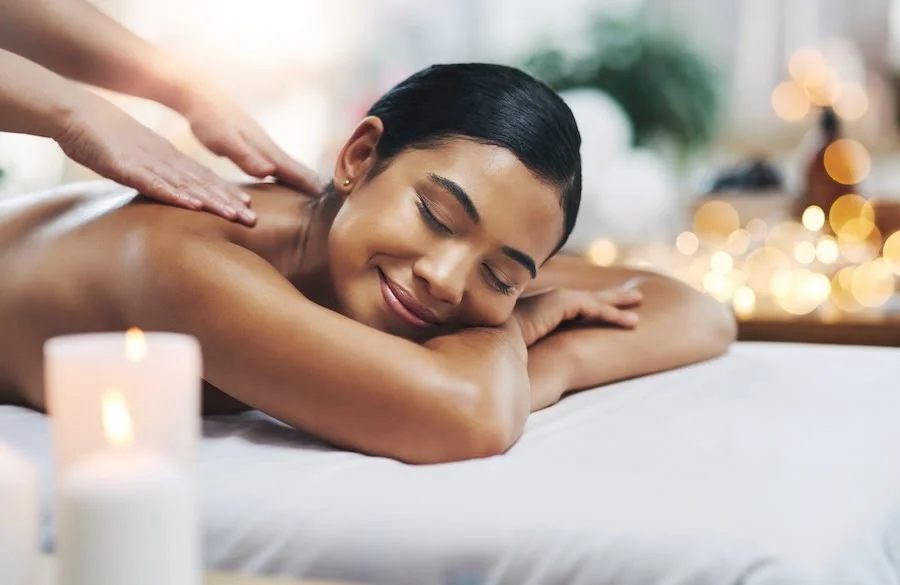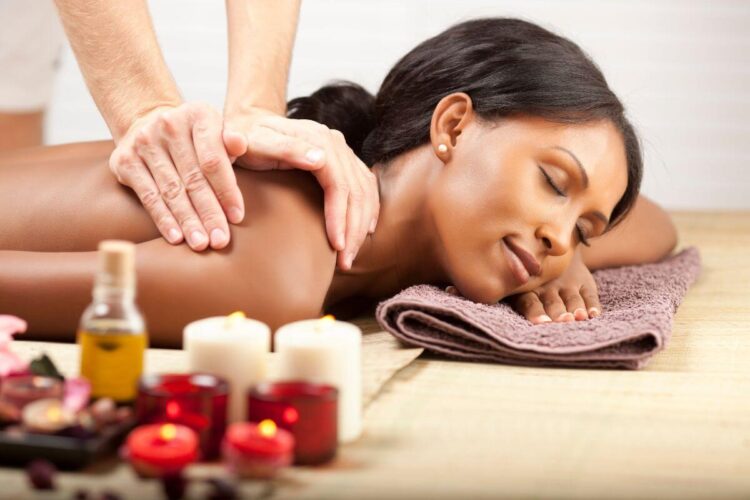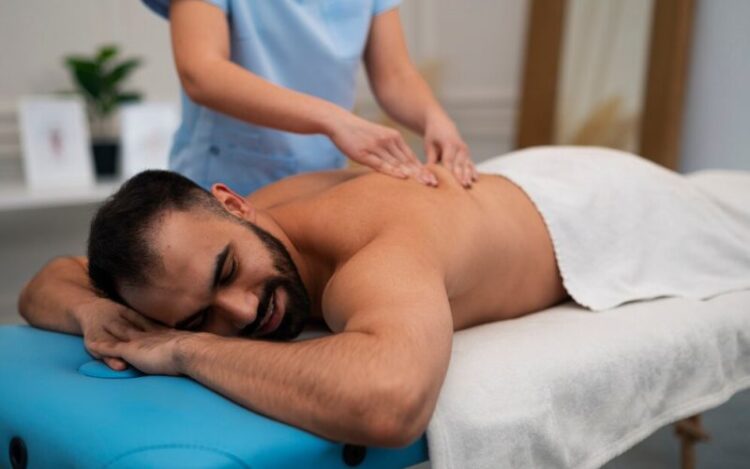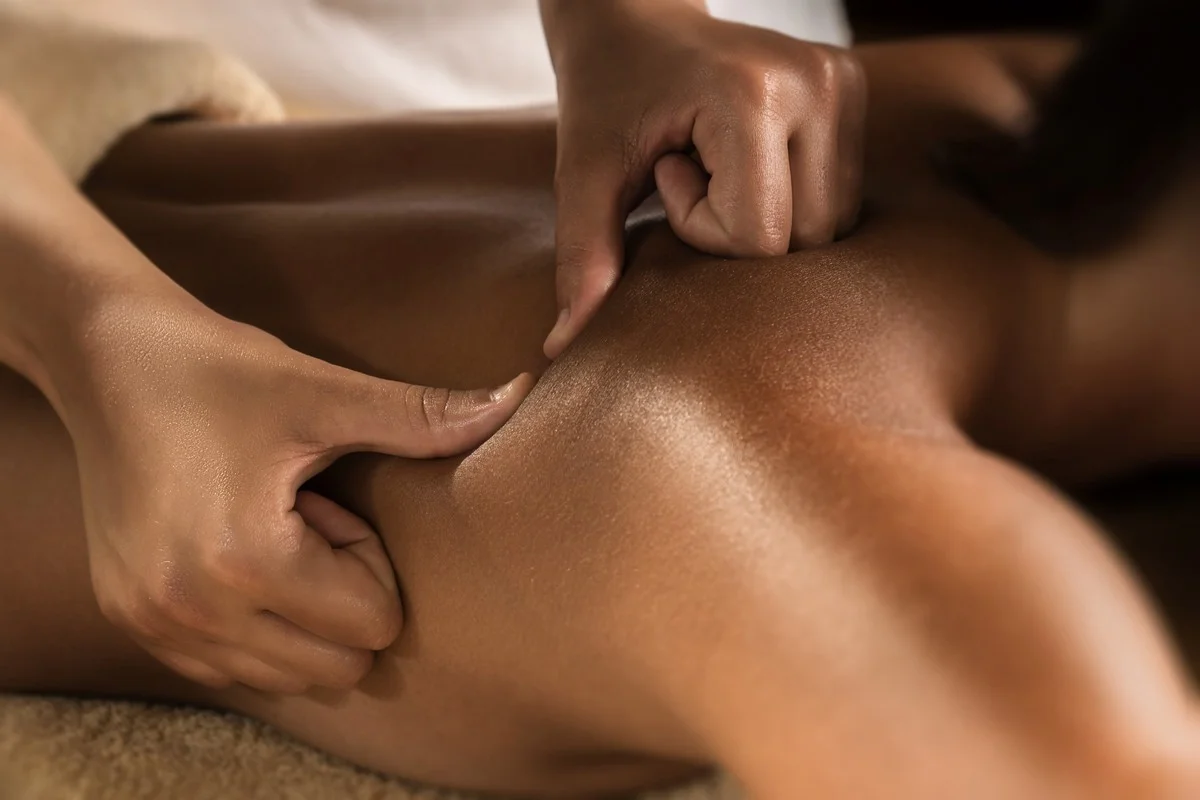Anxiety is a feeling of worry, nervousness, or unease, typically about an imminent event or something with an uncertain outcome.
It is a natural response to stress and can be beneficial in some situations, but when anxiety becomes overwhelming and persistent, it can interfere with daily life.
Table of Contents
Understanding Massage Therapy

Massage therapy has been practiced for thousands of years, with origins in ancient civilizations such as China, India, and Egypt. It has evolved over centuries, integrating techniques from various cultures.
The primary benefits of massage therapy include reduction of muscle tension, relaxation, and improved mobility. Regular sessions can lead to enhanced physical and mental well-being.
There are various types of massage, each with unique techniques and benefits. Remedial massage focuses on treating musculoskeletal problems, while Swedish massage emphasizes relaxation through long, gliding strokes. Aromatherapy massage incorporates essential oils to enhance relaxation.
Shiatsu and Thai massages involve pressure points and stretching, rooted in traditional Asian practices. Chinese massage, such as Seosan massage (서산마사지), combines acupressure and rhythmic movements to promote energy flow and healing.
Scientific Evidence on Massage and Anxiety

Numerous studies have examined the effects of therapeutic touch on anxiety, revealing promising results. A significant 2011 study found that therapeutic massage significantly reduced anxiety levels in patients.
Participants reported a noticeable decrease in feelings of tension and worry after consistent sessions, indicating that therapeutic touch can have a profound impact on mental health.
Other research has demonstrated the benefits of therapeutic touch for children and adolescents. Studies have shown that young individuals who receive regular sessions experience improvements in their overall emotional well-being.
For instance, school-aged children with anxiety disorders have reported feeling more relaxed and less anxious after participating in therapeutic sessions. Adolescents dealing with high-stress environments, such as competitive sports or rigorous academic programs, have also shown positive responses to these treatments.
These studies collectively suggest that therapeutic touch can be a powerful tool in managing anxiety. The evidence points to its effectiveness across various age groups and settings, making it a versatile and accessible option for those seeking relief from anxiety.
Therapeutic touch reduces anxiety through various mechanisms. One key effect is the reduction in cortisol levels, which is a stress hormone. Elevated cortisol levels are commonly associated with chronic stress and anxiety, leading to a host of negative health effects. Regular sessions have been shown to lower cortisol levels, thereby alleviating some of the physical symptoms of anxiety, such as muscle tension and headaches.
Additionally, therapeutic touch stimulates the parasympathetic nervous system, which is responsible for promoting relaxation and reducing the fight-or-flight response. This system counteracts the body’s stress responses, encouraging a state of calmness and rest. By activating the parasympathetic nervous system, therapeutic touch helps individuals feel more at ease and less reactive to stressors.
The promotion of lymphatic drainage is another crucial mechanism. This process involves the movement of lymph fluids throughout the body, which helps eliminate toxins and reduce inflammation.
Improved lymphatic drainage can enhance the body’s natural healing processes and contribute to a sense of overall well-being. Coupled with the relaxation response induced by therapeutic touch, these physiological changes foster a deep sense of calm and tranquility.
Specific Areas and Techniques for Anxiety Relief
Certain areas of the body are particularly effective for relieving anxiety when targeted. The neck and shoulders often hold a lot of tension, which can exacerbate feelings of anxiety.
Releasing this tension through therapeutic touch can significantly reduce stress and promote a sense of calm. Similarly, the back is another area where stress accumulates. Focusing on this region helps release muscle tightness and fosters deep relaxation.
The feet and hands are rich in nerve endings, making them highly responsive to therapeutic touch. Stimulating these areas can create a profound sense of grounding and calm.
Techniques like reflexology, which applies pressure to specific points on the feet and hands, can be particularly effective in reducing anxiety and promoting overall well-being.
Various techniques can be employed to alleviate anxiety. Moderate pressure is effective in reducing muscle tension and promoting relaxation.
This method involves applying consistent, moderate pressure to the muscles, helping to release tightness and ease stress.
Vibration therapy, involving rapid shaking movements, can stimulate the nerves and muscles, providing quick relief from tension and stress. This technique is especially beneficial for those who need a fast and effective way to reduce anxiety
Chair sessions offer a convenient method for quick relaxation, especially in workplace settings where stress levels can be high.
These sessions typically involve shorter durations and focus on key areas like the neck, shoulders, and back, providing immediate relief and promoting a more relaxed state of mind.
By incorporating these techniques into a regular routine, individuals can effectively manage anxiety and enhance their overall quality of life.
Practical Applications and Recommendations

To maximize the benefits of massage therapy for anxiety, regular sessions are recommended. General guidelines suggest weekly sessions for those with high anxiety levels, while daily short sessions can also be beneficial. It is important to tailor the frequency and duration to individual needs, as everyone’s response to massage can vary.
Self-massage can be a useful tool for managing anxiety between professional sessions. While it has its benefits, such as convenience and cost-effectiveness, it also has limitations compared to professional massage.
Tools and devices like vibration massagers and massage cushions can enhance the effectiveness of self-massage. However, it is essential to consult with healthcare professionals to ensure safe and effective self-massage practices.
Case Studies and Anecdotal Evidence
Clinical experiences provide valuable insights into the effectiveness of massage therapy for anxiety. For example, students facing test-taking anxiety have reported significant reductions in stress levels after regular massage sessions.
Similarly, individuals dealing with work-related stress have found relief and improved emotional well-being through consistent massage therapy.
Anecdotal evidence from individuals who have benefited from regular massage highlights its positive impact. Many people share personal stories of how massage therapy has helped them manage anxiety, improve sleep, and enhance their overall quality of life.
These testimonials underscore the potential of massage as a complementary approach to anxiety management.
In Conclusion
Massage therapy has been shown to be effective in reducing anxiety through scientific evidence and practical applications. Regular sessions can lead to significant improvements in physical and mental well-being.
